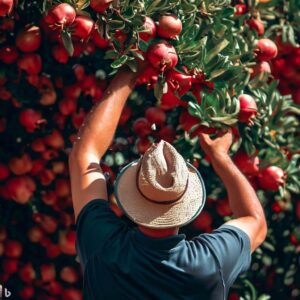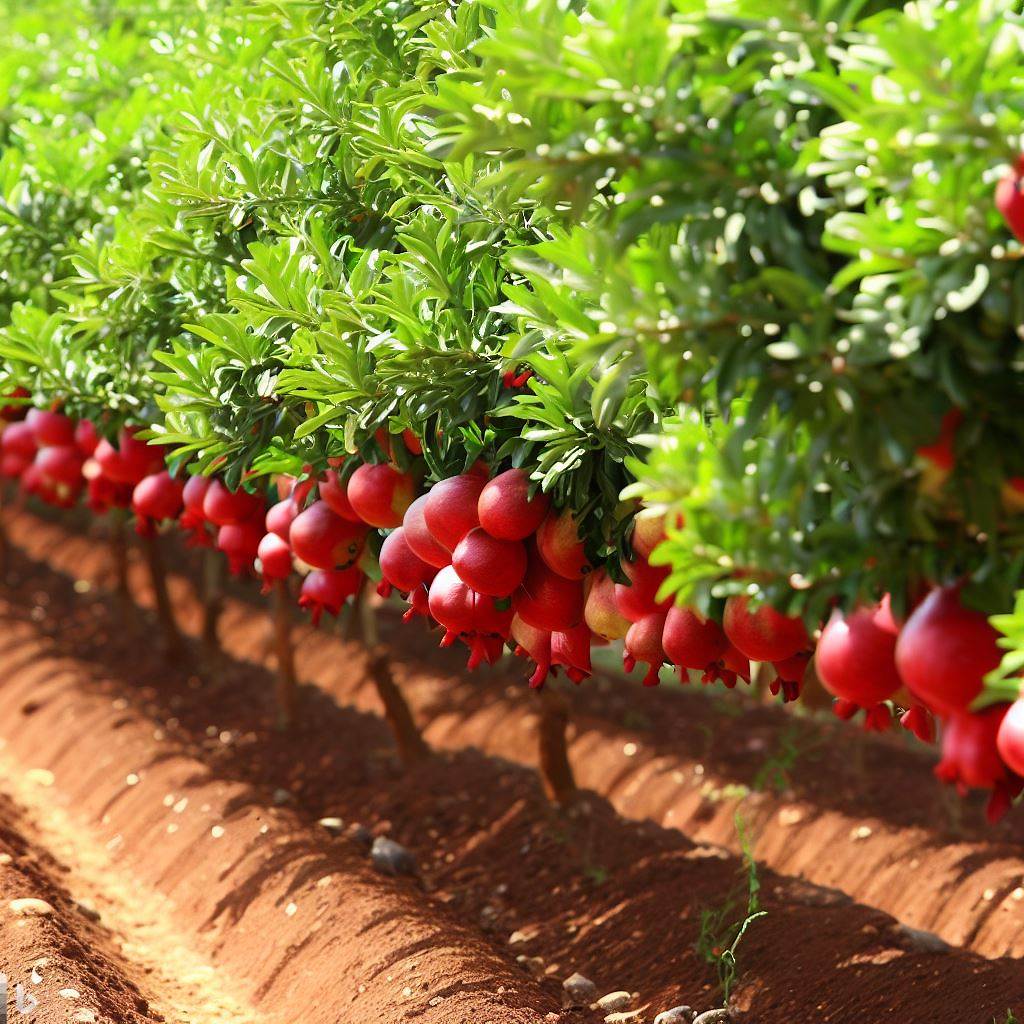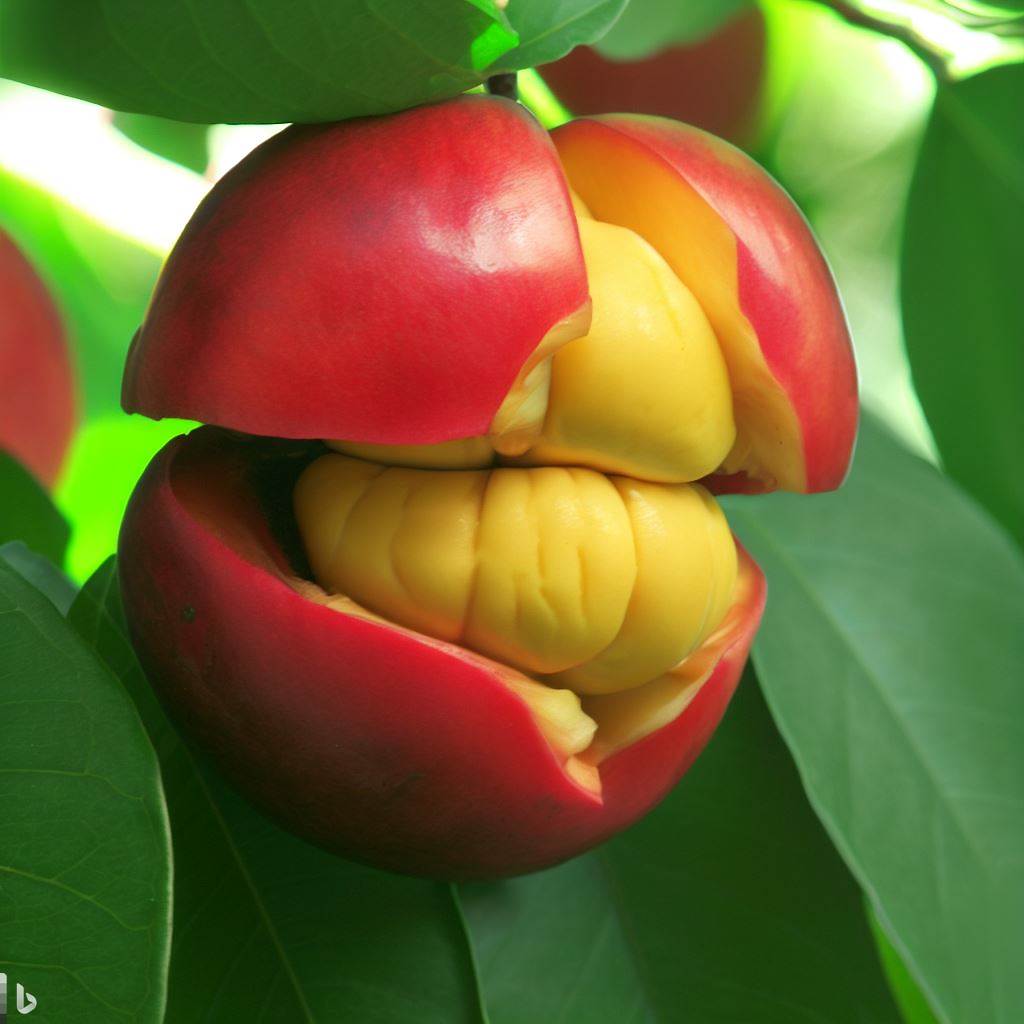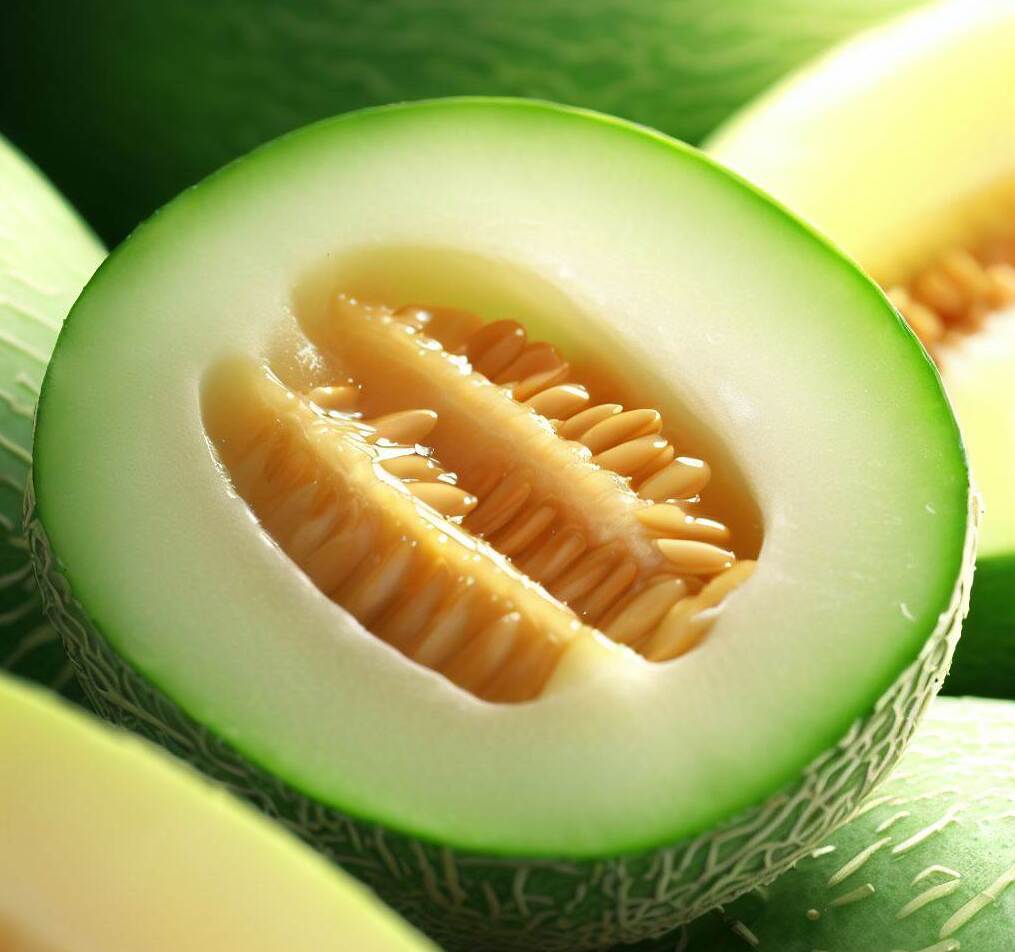Pomegranate Farming
Pomegranate fruit is a super food, it’s juice is a very tasty and beneficial for good health. Pomegranate’s uses as a super food juice and it’s salads. Pomegranate required hot and dry climate during fruits development. It can be grown under different soil types, from low fertile to high fertile soil.
Pomegranate plants are produced in three ways: Cuttings , Air layering and Tissue culture. Pomegranate’s plants planted in field in February march and July August. It’s required compost, SSP, mop and urea fertilizer two times a year. Irrigation required in summer week to week and winter after every 15days. For good pomegranate production three or four branches are left and other are cut.
NUTRITION :
calories, fat, potassium, sodium, sugar, fiber, carbohydrates, protein, vitamin a B6 C , iron, magnesium, calcium and other
HEALTH BENEFITS :
High blood pressure, cancer, Heart problems, antioxidants, urinary health, exercise endurance, antimicrobial, brain health, digestive health and others
GROWER COUNTRIES :
IRAN, Afghanistan, turkey, China, India, Iraq, Pakistan, us, Spain, Syria, Armenia, South africa, Greece, Tunisia, Morocco, cypress, Japan, Egypt and other countries.
PAKISTANI VERIETIES:
Gulabi, NARC1, NARC2, Sultan, Kandhari.
WORLD,S VERIETIES :
Ever sweet, Ruby Red, Kashmir , Sienevyi, Parfianka, Angel Red, Ariana Golden globe, Sharp velvet, Ever Sweet, Purple Heart, Kazake, Red silk, Surah Anor, Dholka and other hundreds varieties are in the world.
FAMILY: Lythraceae
GENUS : Punica
MOTHER COUNTRY : IRAN
Eating pomegranate
Eating pomegranate is a delightful experience. Pomegranates are unique fruits with a vibrant red color and a distinctive taste. They are packed with juicy, gem-like seeds called arils, which are the edible part of the fruit.
To eat a pomegranate, start by cutting off the crown or the top part of the fruit. Then, make shallow cuts along the ridges of the fruit, dividing it into sections. Gently pull apart the sections, revealing the clusters of arils inside.
Cutting a pomegranate
Here’s a step-by-step guide on how to cut a pomegranate:
- Start by selecting a ripe pomegranate. Look for one that feels heavy for its size and has a deep, vibrant color.
- Wash the pomegranate under cool running water to remove any dirt or debris from the surface.
- Use a sharp knife to cut off the crown or the top part of the pomegranate. This will expose the seeds inside.
- Score the pomegranate skin along its natural ridges or sections. Make shallow cuts from the top to the bottom, but be careful not to cut too deeply into the arils (seeds) inside.
- Once you’ve made the cuts, use your hands to gently pull the pomegranate apart along the scored lines. This will help separate the sections and expose the clusters of arils.
- Working over a bowl or a clean surface, hold one section of the pomegranate and tap the back with a wooden spoon or your hand. This will loosen the arils and make them fall into the bowl.
- Continue tapping and gently separating the arils from the pith (white membrane) until you’ve removed all the seeds from the pomegranate.
- If desired, you can remove any remaining bits of pith or white membrane by rinsing the arils under water in a colander.
Now, your pomegranate arils are ready to be enjoyed as a snack, added to salads, or used in various recipes.

Pomegranate juice good for you
Pomegranate is good for
Pomegranates are known for their numerous health benefits. Here are some reasons why pomegranates are considered good for you:
Rich in Antioxidants:
Pomegranates are packed with antioxidants, such as polyphenols, which help protect the body against free radicals and oxidative stress. These antioxidants may help reduce inflammation and lower the risk of chronic diseases.
Heart Health:
The antioxidants in pomegranates may help prevent the oxidation of LDL (bad) cholesterol, reduce blood pressure, and improve overall cardiovascular health.
Anti-Inflammatory Properties:
Pomegranates have anti-inflammatory effects, which can be beneficial for conditions like arthritis and other inflammatory diseases. They may help reduce inflammation in the body and alleviate related symptoms.
Cancer Prevention:
Some studies suggest that the compounds found in pomegranates, such as ellagitannins and punicalagins, may have anti-cancer properties. These compounds may help inhibit the growth of cancer cells and reduce the risk of certain types of cancer, including breast and prostate cancer.
Digestive Health:
Pomegranates are a good source of dietary fiber, which is essential for a healthy digestive system.
Nutrient Content:
Pomegranates are a good source of vitamins and minerals, including vitamin C, vitamin K, potassium, and folate. These nutrients play important roles in supporting overall health, immune function, and cell production.
Skin Benefits:
The antioxidants in pomegranates can help protect the skin from damage caused by free radicals and promote a youthful appearance. Pomegranate extract is often used in skincare products for its potential to improve skin texture, reduce wrinkles, and enhance skin health.
Understanding Pomegranates
Pomegranates (Punica granatum) are delicious fruits known for their vibrant red color, juicy arils, and numerous health benefits. With a rich history dating back centuries, pomegranates have been revered in various cultures for their symbolism and medicinal properties.
They are packed with essential nutrients like vitamins C and K, antioxidants, and dietary fiber, making them a valuable addition to a healthy diet.
Selecting the Right Variety
Successful pomegranate farming starts with choosing the right variety that thrives in your specific climatic conditions and soil type. While pomegranates can adapt to various environments, they prefer a semi-arid to arid climate with well-drained soil.
Popular varieties include Wonderful, Hicaz, and Ambrosia, each offering unique characteristics and flavor profiles. Consider consulting local agricultural experts or nurseries to determine the most suitable varieties for your region.
Preparing the Soil
Before planting pomegranate trees, it is crucial to prepare the soil adequately. Conduct a soil analysis to assess its pH levels, nutrient content, and organic matter. Pomegranates prefer slightly acidic soil with a pH range of 5.5 to 7.5. Enhance the soil fertility by incorporating organic matter such as compost or well-rotted manure. Ensure proper irrigation and drainage systems to prevent waterlogging, which can be detrimental to pomegranate trees.
Planting Pomegranate Trees
Pomegranate trees can be propagated through seeds, cuttings, or grafting. However, for commercial cultivation, using grafted plants from reputable nurseries is recommended to ensure consistent quality and yield. The optimal planting time varies depending on the region, but it generally falls during the early spring season. Maintain adequate spacing between the trees to allow air circulation and facilitate future tree management operations.
Care and Maintenance
Water management is crucial for the successful growth of pomegranate trees. Young plants require regular irrigation, while mature trees are relatively drought-tolerant. Implement a suitable irrigation system that delivers water directly to the root zone, avoiding wetting the foliage excessively. Apply fertilizers at appropriate intervals to supply essential nutrients to the trees. Pruning and training techniques should be employed to shape the trees, promote proper light penetration, and improve fruit quality.
Pest and Disease Management
Pomegranate trees can be susceptible to various pests and diseases. Common pests include aphids, whiteflies, and fruit flies, which can be controlled through natural predators or insecticides if necessary.
Diseases like fungal infections and bacterial blight can be prevented through good orchard management practices, including proper sanitation, regular monitoring, and timely intervention. Employing integrated pest management strategies minimizes chemical use and promotes sustainable farming.
Harvesting and Post-Harvest Handling
Harvesting pomegranates at the right maturity stage is essential to ensure optimum flavor and quality. The fruit should exhibit a deep red color and a firm skin. Carefully cut the fruit from the tree to avoid damage.
After harvesting, sort the pomegranates based on size and quality, and store them in a cool and well-ventilated area. Proper post-harvest handling prolongs the shelf life and maintains the fruit’s visual appeal.

Marketing and Profitability
Market demand for pomegranates has been steadily increasing due to their health benefits and versatility in culinary applications. Consider exploring value-added products such as fresh arils, juices, or extracts to diversify your product range and increase profitability.
Develop a marketing strategy that includes targeting local markets, partnering with retailers, or establishing online sales channels. Engage with consumers, highlight the nutritional advantages, and emphasize the superior quality of your pomegranates.
Conclusion
Pomegranate farming presents an exciting opportunity for farmers seeking a profitable and sustainable enterprise. By understanding the intricacies of pomegranate cultivation, from selecting the right variety to implementing effective pest management strategies, you can maximize your yield and quality.
Remember to prioritize soil preparation, proper care and maintenance, and efficient post-harvest handling. With dedication and knowledge, you can flourish in the vibrant world of pomegranate farming.
Frequently Asked Questions (FAQs)
1. Is pomegranate farming profitable?
Pomegranate farming can be highly profitable, given the increasing demand for pomegranates and their by-products. However, success depends on factors such as market conditions, proper orchard management, and marketing strategies.
2. How long does it take for a pomegranate tree to bear fruit?
Pomegranate trees generally begin to bear fruit within a span of 2 to 3 years after being planted. However, it might take approximately 5 years for the tree to achieve its maximum production capacity.
3. Are pomegranates challenging to grow?
Pomegranates are relatively hardy and can adapt to different climatic conditions. With proper care and management, they can be grown successfully by both experienced and beginner farmers.
4. Can pomegranates be grown in containers?
Yes, pomegranates can be grown in containers, making them suitable for small-scale farming or urban gardening. Choose dwarf or compact varieties that are well-suited for container cultivation.
5. Are pomegranates susceptible to any specific diseases?
Pomegranates can be affected by diseases such as fungal infections, bacterial blight, and root rot. However, implementing good orchard management practices and timely interventions can minimize the impact of these diseases.







